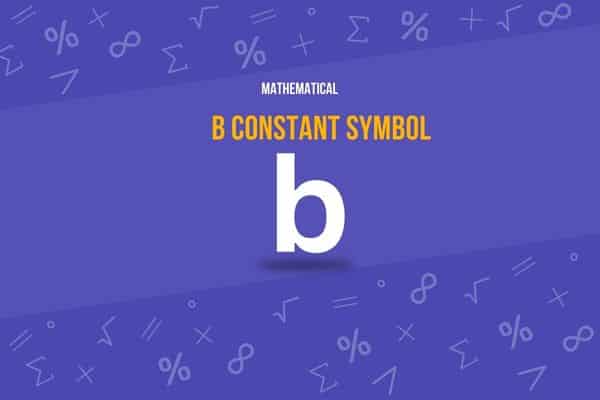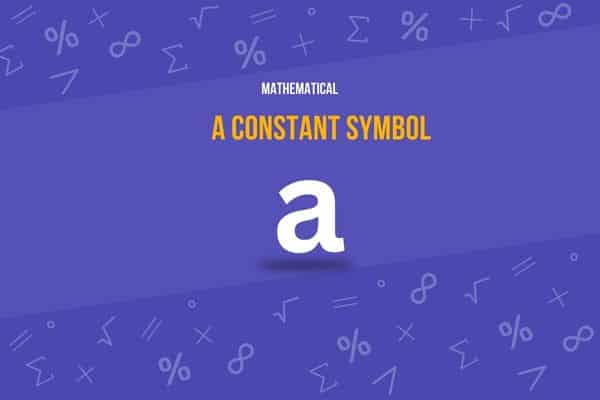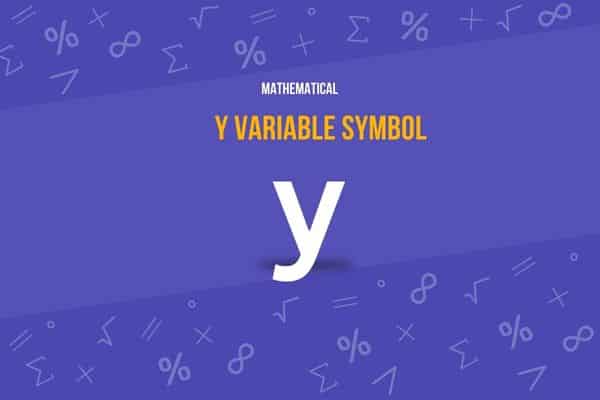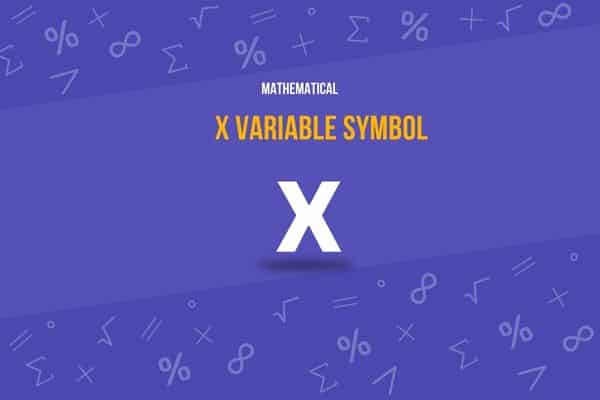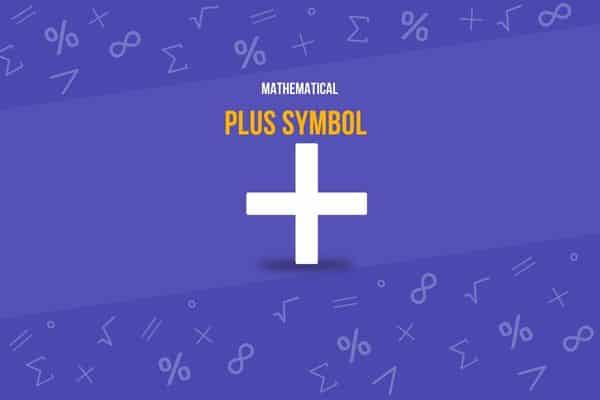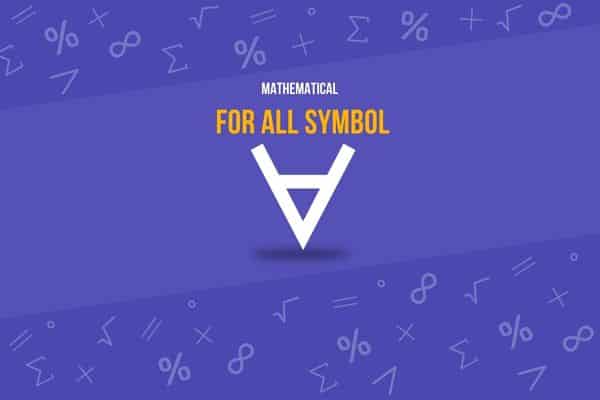What is the Limit Symbol?
You’re on the brink of a fascinating journey into the world of mathematical limits. This might be a concept you’ve just brushed up against, or perhaps you’re simply intrigued by the compelling universe of calculus.
Either way, you’re in the right place to expand your understanding and break down any lingering uncertainties.
You’ll discover the details of the limit symbol (lim), the heart of many complex yet exhilarating mathematical ideas.
Let’s get started!
Fast Facts
lim
Limit Symbol (I’m)
Limit Symbol (lim) Overview
The “lim” notation commonly used in calculus does not have a single Unicode character because it is typically represented using a combination of the letters L, I, and M.
| Attribute | Description |
|---|---|
| Symbol Name | Limit Symbol |
| Unicode | Not applicable as “lim” is not a single Unicode symbol |
| Image | lim |
| Brief Description | Represents the limit of a function in calculus. Typically rendered as “lim” in standard mathematical notation. |
| Unicode Version and Date | Not applicable |
| Unicode Block Name | Not applicable |
| Plane | Not applicable |
| Script | Common (assumed, as it’s represented in Latin script) |
| Category | Not applicable |
| Bidirectional Class | Left-to-Right (assuming common text rendering) |
| Combining Class | 0 (Not Reordered) |
| Character is Mirrored | No |
| HTML Entity | Not applicable |
| CSS | Not applicable |
| UTF-8 Encoding | Not applicable |
| UTF-16 Encoding | Not applicable |
| UTF-32 Encoding | Not applicable |
Here’s What You Will Find
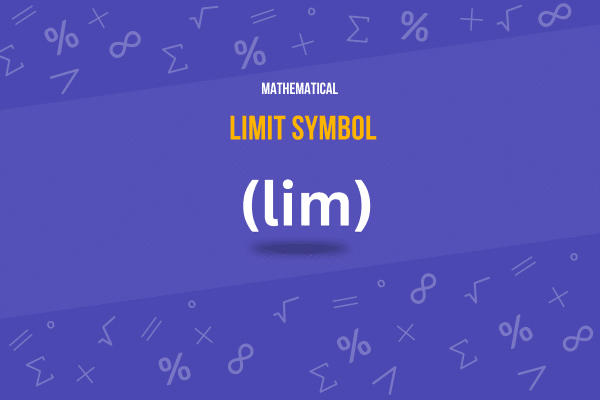
Limit Symbol
The Limit symbol, often called ‘lim,’ is a key concept in calculus and other branches of higher mathematics. Essentially, it describes the behavior of a function as it approaches a specific value or point.
A limit answers the question: what value does a function get close to as the input (or ‘x’ value) gets increasingly close to a certain number?
Other Names
While the “lim” symbol is universally recognized in mathematics, it doesn’t technically have other names. Instead, it’s a shorthand notation representing the word “limit.” Nevertheless, the concepts associated with the limit symbol vary depending on context.
Limit Symbol Meaning
The “lim” symbol, short for “limit,” is a fundamental mathematical symbol used extensively in calculus. This symbol plays a crucial role in defining the behavior of functions as they approach specific points or infinity. Here’s a detailed look at the “lim” symbol, its significance, and how it is applied in mathematical contexts.
The Limit symbol, ‘lim,’ is a shorthand notation used in calculus and mathematical analysis to denote the limit of a function or sequence as it approaches a certain point or value. The concept it encapsulates is fundamental to several areas of mathematics, particularly calculus.
Essentially, the limit describes the behavior of a function or sequence as the input (often represented as ‘x’) gets increasingly close to a certain number, even if the function itself may not be defined at that point.
It asks, “As ‘x’ gets closer to a specific value, what value does the function or sequence appear to be approaching?” The answer to this question is what we call the limit. This powerful concept allows us to make sense of mathematical situations that may seem indeterminate or undefined.
For example, through the concept of limits, we can define the slope of a curve at a point (a derivative) and compute the area under a curve (an integral), among other things. It gives us a way to talk about very small quantities and incremental changes, which are central to the concepts of calculus and many other branches of higher mathematics.
Limit Symbol Unicode
Unicode is a universal character encoding standard used in computing that provides a unique number for every character, regardless of the platform, program, or language. It has more than a million unique code points. It is designed to encompass virtually every character from all writing systems and various symbols, including mathematical ones.
In the case of the Limit symbol (lim), it doesn’t have a specific Unicode character because it is typically represented using regular Latin characters. You would just write it out using the lowercase letters ‘l’, ‘i’, and ‘m’. This is because “lim” is an abbreviation for “limit,” so it’s typically written out as ordinary text in mathematical notation instead of having a distinct symbol.
Limit Symbol Uses
The Limit symbol, ‘lim,’ is an incredibly versatile tool used in many areas of mathematics. In calculus, it forms the foundation for defining derivatives—the measure of how a function changes—and integrals, which quantify the area under a curve. It helps understand functions’ behavior as they approach specific values, offering insights into their nature.
Below, we explore several key applications of the limit symbol across various mathematical and practical contexts.
Calculus
- Derivatives: The limit symbol is crucial for defining the derivative of a function, which represents the rate at which one quantity changes with respect to another. For example, the derivative of ( f(x) ) at point ( a ) is given by ( f'(a) = \lim_{h \to 0} \frac{f(a+h) – f(a)}{h} ).
- Integrals: In integral calculus, limits help in defining definite integrals as the limit of a sum. For instance, the area under a curve from ( a ) to ( b ) can be calculated as ( \lim_{n \to \infty} \sum_{i=1}^n f(x_i) \Delta x ), where ( \Delta x ) is the width of the subintervals into which the interval ([a, b]) is divided.
Analysis
- Continuity: A function is said to be continuous at a point if the limit of the function as it approaches the point equals the function’s value at that point. This use of the limit symbol is fundamental in determining where a function is or isn’t continuous.
- Asymptotic Behavior: Limits are used to analyze the behavior of functions as they approach infinity or other critical points, helping in studying their end behavior—such as determining horizontal asymptotes of a function.
Engineering and Physics
- Motion and Dynamics: In physics, limits are used to determine instantaneous rates of change, such as velocity and acceleration, by analyzing the displacement over time as time intervals approach zero.
- Signal Processing: Limits are applied in signal processing to determine the behavior of signals as they approach certain time points, which is crucial for smoothing or predicting signal behaviors.
Economics and Statistics
- Marginal Analysis: In economics, limits are used to calculate marginal costs and benefits, helping businesses determine the impact of producing one additional unit of a good.
- Probability: In statistics, limits are used in the formulation of various probability distributions and to define key statistical measures, such as expected values and variances, through integrals.
Mathematical Series and Sequences
- Convergence: Limits are essential for determining whether a series or sequence converges to a specific value or diverges. For example, the convergence of a series (\sum a_n) is typically analyzed using the limit of partial sums ( \lim_{n \to \infty} \sum_{i=1}^n a_i ).
These examples illustrate the broad utility of the limit symbol in both theoretical and practical applications across diverse disciplines. Its use in calculus and beyond highlights its foundational role in modern mathematics and applied sciences, demonstrating how central the concept of limits is to understanding and describing the world mathematically.
Beyond calculus, the concept of limits is crucial in analysis, playing a key role in defining the continuity and convergence of sequences and series.
Limit Symbol Examples
The “lim” symbol is a crucial tool in calculus and other areas of mathematics for exploring the behavior of functions and sequences as they approach a specific value. Below are practical examples illustrating the diverse applications of the limit symbol across various mathematical scenarios.
Calculus
- Determining Instantaneous Rate of Change:
- Example: To find the derivative of (f(x) = x^2) at (x = 2), we use:
[
f'(2) = \lim_{h \to 0} \frac{(2+h)^2 – 4}{h} = \lim_{h \to 0} \frac{4 + 4h + h^2 – 4}{h} = \lim_{h \to 0} \frac{4h + h^2}{h} = \lim_{h \to 0} (4 + h) = 4
] - Explanation: This calculation shows how the derivative at a specific point measures the slope of the tangent line to the curve at that point, representing the instantaneous rate of change.
- Evaluating an Integral:
- Example: The area under the curve (f(x) = x) from (x = 0) to (x = 1) can be expressed as:
[
\int_0^1 x \, dx = \lim_{n \to \infty} \sum_{i=1}^n \frac{i}{n} \cdot \frac{1}{n} = \lim_{n \to \infty} \frac{1}{n^2} \sum_{i=1}^n i = \frac{1}{2}
] - Explanation: This example demonstrates how integration, involving limits, calculates the area under a curve, a fundamental concept in calculus.
Algebra
- Series Convergence:
- Example: To determine the convergence of the series ( \sum_{n=1}^\infty \frac{1}{n^2} ), we examine:
[
\lim_{n \to \infty} \frac{1}{n^2}
] - Explanation: Since this limit is zero, it suggests (and is confirmed by further analysis) that the series converges, which is a critical test in the study of infinite series.
Physics
- Finding Velocity in Kinematics:
- Example: If the position of an object is given by (s(t) = t^2 – 4t + 6), the velocity at time (t) is:
[
v(t) = \lim_{h \to 0} \frac{s(t+h) – s(t)}{h}
] - Explanation: This formula uses the limit definition of derivative to find the instantaneous velocity, showing how physical movements can be analyzed mathematically.
Economics
- Calculating Marginal Cost:
- Example: If the cost function is (C(q) = 100q – 10q^2 + q^3), the marginal cost at (q = 10) is:
[
MC(10) = \lim_{h \to 0} \frac{C(10+h) – C(10)}{h}
] - Explanation: This example uses the derivative, via the limit, to determine the additional cost of producing one more unit, a key concept in economic decision-making.
These examples demonstrate how the limit symbol bridges theoretical mathematics and practical applications, providing crucial insights in engineering and economics. Its ability to describe dynamic changes and behaviors makes it indispensable in academic studies and real-world problem-solving.
Here’s a basic example of how we use the Limit symbol:
Suppose we want to find the limit as x approaches 3 of the function f(x) = x^2. We would write this as:
lim (x->3) x^2
In this case, to find the limit, we simply substitute x with 3 in the function:
(3)^2 = 9
So, we say that the limit of the function f(x) = x^2 as x approaches 3 is 9.
This example is straightforward because x^2 is a continuous function, meaning its value can be found simply by substituting the ‘x’ value into the function. However, the concept of limits becomes more crucial when we deal with functions that are not defined or have some sort of discontinuity at the point we’re interested in, as it allows us to explore the function’s behavior near that point.
Why is the Limit Symbol Important?
The importance of the Limit symbol, ‘lim,’ cannot be overstated in mathematics, particularly in calculus and analysis. It offers a lens through which we can explore the behavior of functions as they approach specific points, even at places where the functions might not be defined.
This allows for a deeper understanding of the functions’ characteristics and patterns. Limits also form the bedrock of calculus—derivatives and integrals are defined using limits, making it possible to investigate rates of change and areas under curves, which are fundamental concepts in many fields of study.
Limit Symbol History
The concept and notation of limits are integral to the field of calculus and have a rich historical development that spans several centuries. Understanding the history of the limit symbol (“lim”) provides insight into the evolution of mathematical thought and the profound impact of calculus on science and engineering.
Early Conceptual Foundations
The roots of the limit concept can be traced back to ancient Greek mathematicians who dealt with the infinite and the infinitesimally small, although not in the formalized manner seen today. Notably, the method of exhaustion used by Eudoxus and later by Archimedes in the 3rd century BC is considered a precursor to the concept of limits. They used this method to calculate areas and volumes, approaching the desired measurements by inscribing and circumscribing figures with known areas or volumes.
Medieval and Renaissance Contributions
During the Middle Ages, Indian mathematician Bhaskara II in the 12th century provided examples that implied the limit concept, although without formal definition or notation. In Europe, mathematicians of the Renaissance grappled with infinite series and tangent problems, inching closer to the formal use of limits.
The Formalization in the 17th Century
The rigorous development of limits did not occur until the invention of calculus by Sir Isaac Newton and Gottfried Wilhelm Leibniz in the late 17th century. Newton’s method of fluxions and Leibniz’s differential calculus implicitly used the concept of limits to describe instantaneous rates of change and the summing of infinitely small quantities.
Introduction of the “lim” Notation
The actual notation “lim” was introduced much later. It was first used by the French mathematician Augustin-Louis Cauchy in the 19th century. Cauchy, who was pivotal in formalizing calculus on a firm logical foundation, used the limit concept extensively to define continuity, the derivative, and the integral. His rigorous definition helped address many ambiguities and paradoxes associated with earlier methods.
20th Century and Beyond
With Cauchy’s foundation, the development of formal limit definitions continued into the 20th century. Karl Weierstrass’s formalization of theε-δ (epsilon-delta) definition of a limit further clarified the concept by providing an arbitrarily precise language to describe limits. This formalization is a cornerstone in mathematical analysis, ensuring that calculus can be taught and applied rigorously and clearly.
Modern Usage
Today, the concept and notation of limits are fundamental in teaching calculus. They are essential for understanding and applying the mathematical principles that underpin a wide range of scientific and engineering disciplines. The development of limits has enabled countless technological advances and continues to be a vital area of mathematical research and application.
The history of the limit symbol illustrates a remarkable journey of mathematical evolution, from ancient methods to sophisticated modern analysis, reflecting the dynamic nature of mathematical innovation and its crucial role in advancing human understanding.
Limit Symbol Origin
The origin of the “lim” symbol, representing limits in calculus, is an important milestone in the history of mathematical notation. It reflects the evolution of mathematical concepts from intuitive ideas to rigorous theories. While simple, the symbol encapsulates the complex journey of developing calculus into a formal mathematical discipline.
The Development of Calculus
The foundational concepts of calculus, particularly the ideas surrounding limits, began to take shape with the work of Sir Isaac Newton and Gottfried Wilhelm Leibniz in the 17th century. However, the specific notation “lim” did not emerge with their initial formulations. Newton and Leibniz used different approaches and notations, focusing on infinitesimals and “fluxions” rather than explicit limit processes.
The Role of Augustin-Louis Cauchy
The “lim” notation, as it is known today, was introduced by Augustin-Louis Cauchy in the 19th century. Cauchy was a pivotal figure in calculus’s transition from intuitive manipulations of infinitesimals to a more rigorous and formal discipline grounded in the concept of limits. His work laid the groundwork for what would become modern analysis.
Formalizing the Notation
In his lectures and textbooks, Cauchy used the “lim” notation to clearly define what we now recognize as the formal limit of a function. He introduced this notation to provide a clear, precise definition of limits to underpin the concepts of continuity, derivatives, and integrals. Using “lim” allowed for a more systematic and understandable approach to these complex ideas, significantly advancing mathematical clarity and rigor.
Influence of Cauchy’s Definitions
Cauchy’s introduction of “lim” influenced subsequent mathematicians and educators, making it a standard part of mathematical language. His definitions and notations were essential in moving away from the ambiguities associated with infinitesimal calculus to a more universally accepted and logically sound framework.
Legacy and Continuing Impact
Cauchy established the “lim” notation, which has had a lasting impact on mathematics. It is fundamental in teaching calculus and is used extensively in higher mathematics and various applications in science and engineering. The clarity and precision it brought to calculus have enabled more advanced developments in analysis and helped bridge gaps between theoretical mathematics and practical applications.
In summary, the origin of the “lim” symbol in mathematical notation is tightly linked to Augustin-Louis Cauchy’s formalization of calculus in the 19th century. His contributions not only defined how limits are understood and taught but also solidified the foundation of mathematical analysis, highlighting the depth and breadth of calculus as a critical tool in scientific and engineering disciplines.
Evolution of the Limit Symbol
While limits have evolved significantly, the Limit symbol itself, represented as ‘lim,’ has remained relatively constant since it was first introduced. Since its inception, the symbol has been widely accepted and used consistently across different areas of mathematics.
What has evolved is not the symbol itself but our understanding and application of the concept it represents. The idea of limits has expanded and deepened over time, finding new applications in increasingly complex areas of mathematics and enabling the development of new theories and mathematical tools.
Limit Symbol In Everyday Life
Reflecting on the Limit symbol, ‘lim,’ provides an interesting perspective on mathematics and life. The principle of the limit is about approaching a certain point, getting indefinitely close but not necessarily reaching it. It’s a notion that resonates with many aspects of our daily lives—always striving for goals, making progress, and getting closer, even if we never quite attain perfection. Just as the limit allows us to make sense of complexity in mathematics, adopting the ‘lim’ mindset can help us navigate the complexities of life.
We can apply this principle to personal growth, for example. Each day, we can strive to improve and get closer to our ‘limit,’ our ideal selves. We may never reach absolute perfection, but we can get indefinitely close, continually improving. Similarly, we can use it to break down overwhelming tasks into smaller, more manageable parts, tackling one ‘increment’ at a time in the spirit of calculus.
Thus, the principles behind the Limit symbol can inspire patience and perseverance, whether in mathematical exploration or the broader pursuit of life’s goals.
Last Thoughts
The Limit symbol (lim) is a small notation with enormous implications, forming the backbone of calculus and underpinning various concepts across different fields of mathematics. Its significance goes beyond academia, subtly influencing aspects of popular culture and providing a unique perspective on daily life.
Before You Go
Don’t stop your exploration here; explore the fascinating world of mathematics and uncover the fascinating stories and applications behind other symbols—it’s a journey that promises to expand your understanding and appreciation of this universal language.
If you’ve enjoyed exploring the origins and uses of the “lim” symbol and its pivotal role in calculus, why not share this post with others? Whether they are fellow students, educators, or just enthusiasts of mathematics, spreading this knowledge can inspire appreciation for the profound concepts that shape our understanding of the mathematical world.
Sharing this insight can spark intriguing discussions and deepen the collective understanding of calculus’s rich history and its foundational principles. Share this post and contribute to a broader conversation about the beauty and intricacy of mathematics!

